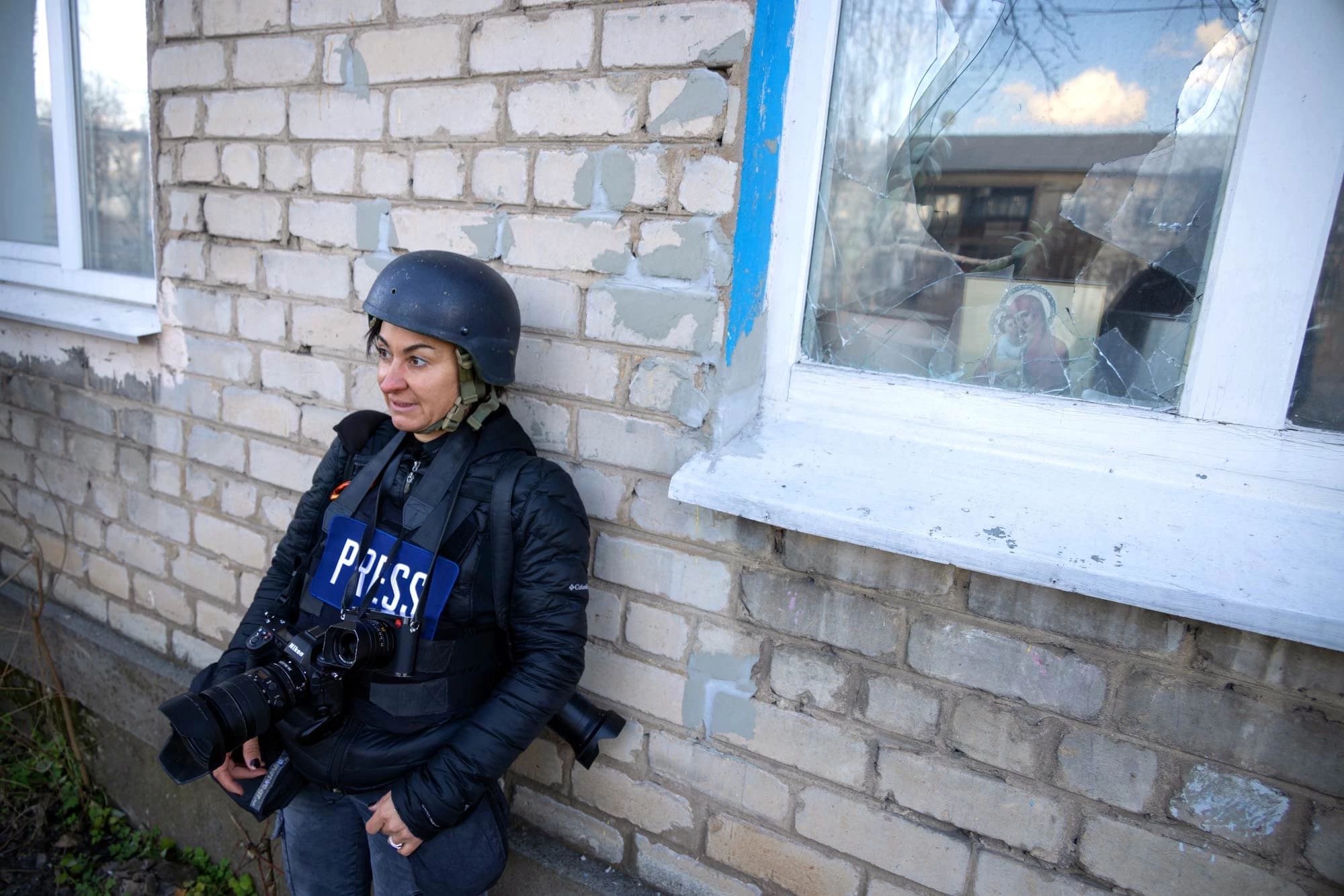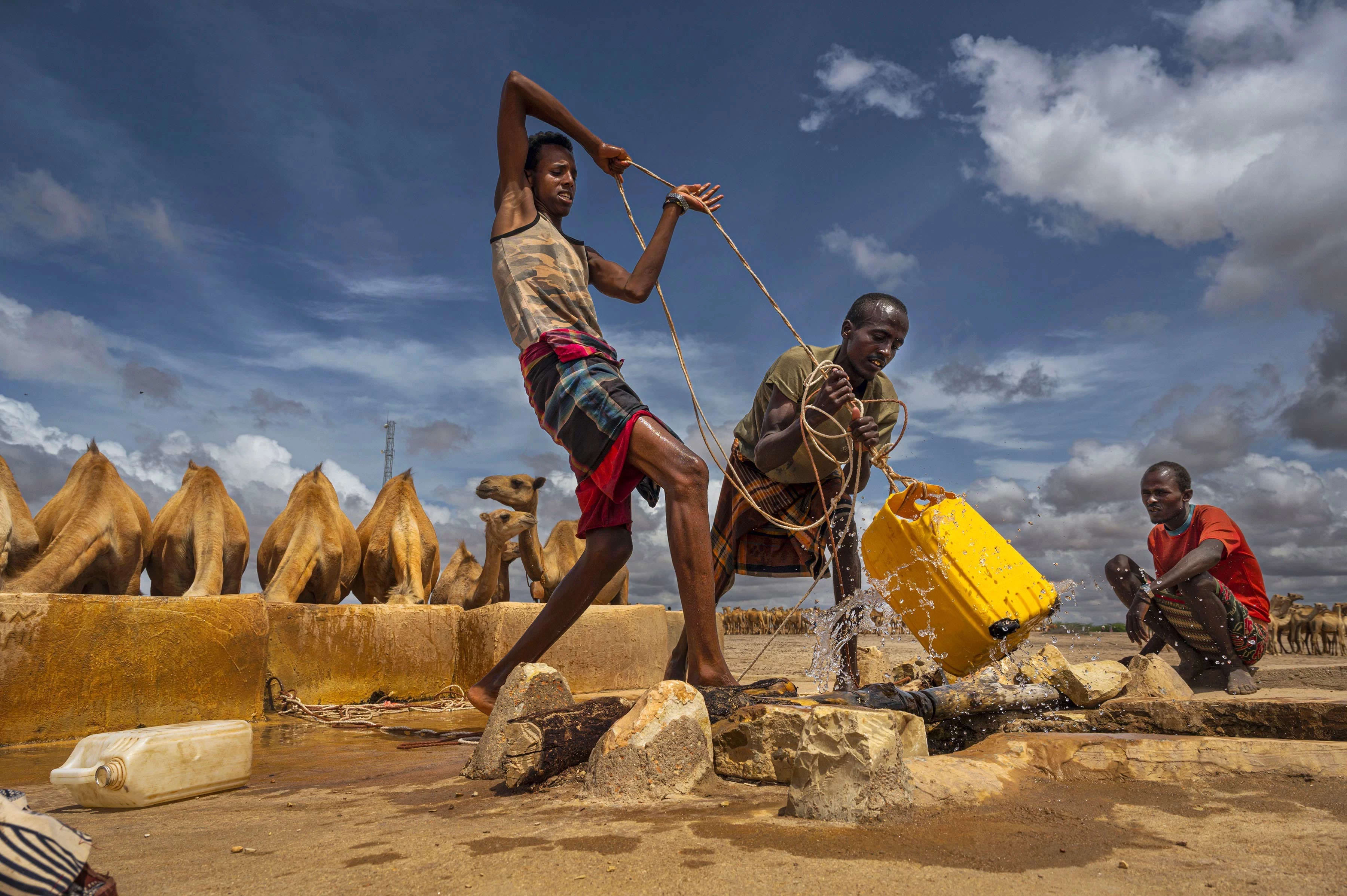As her SVA Masters Series exhibition gets extended to December, the acclaimed and celebrated Pulitzer Prize-winning photographer discusses her craft and point of view in a new Q&A.

Lynsey Addario in Ukraine.
It may be hard to imagine a photojournalist finding a community amid an extremely dangerous war zone in a foreign country where they don’t speak the language and must fight to survive, all while on deadline for a story.
For Lynsey Addario, though, the people she meets drive her to keep going, whether fellow journalists in the field or local citizens who have experienced unfathomable trauma. She cries with them, laughs with them, grieves with and listens to them—always with the ultimate goal of being able to share a story of humanity with a world that might otherwise miss it. Giving a voice to the voiceless has been at the heart of Addario’s nearly 25-year career as a photographer, important highlights of which are currently on view at the SVA Chelsea Gallery.
Now extended through Saturday, December 10, “The Masters Series: Lynsey Addario” is an immersive experience of what Addario has seen from behind her lens and the connecting pieces that have shaped her along the way. Journals, news clippings, old passports and press credentials mix with large-scale photo prints and interactive audio-visual pieces to tell a story not often told: Addario’s own.
As part of the exhibition, Addario recently spoke with SVA about how she remains resilient and the process of distilling decades of work into one gallery.

Ethiopian men pull water from a well in the Bulale, near the Somali border, Ethiopia, May 2021. The 2021 rains were disappointing in Ethiopia, which has been stuck in a devastating drought for several years. On view at “The Masters Series: Lynsey Addario.”
The exhibition takes us through so many different points in your career. How challenging was it to narrow down so many experiences and such a vast body of work and what was the curation process?
The process was incredibly challenging. In 2018, I published my first solo book of photography, Of Love & War, which was a bit like a retrospective, so that really helped identify the process of the general image and story selection. But I’ve also produced a lot of work since 2018. I worked closely with curators Maya Benton and Perri Hofmann, and we had a lot of back and forth on which stories to include, which images within each section, and how they should be placed on the walls. They also brought the very powerful ideas of [printing images from Ukraine on] large-scale vinyl, which I think worked so well because we are [updating them in real time] as I continue to work. The ephemera was also almost entirely curated by Maya and Perri.
How do you feel this exhibition will educate students about the practice of photojournalism?
We have intentionally added a lot of ephemera, including old notebooks, cameras and published works, so students can see my photography’s arc, storytelling and everything that goes into producing an assignment or covering a story.
Your work obviously deals with extremely sensitive subject matter. How have your practices around ethics evolved throughout your career?
I have become more cautious over the years over consent. I have always ensured I get consent when photographing anyone in a sensitive story—both from the subject and often (in the case of women in Afghanistan, for example) from male relatives or husbands. In some stories, there is often a guardian or some sort of psycho-social counselor present. Given the proliferation of social media and the fact that an image can appear anywhere and everywhere, I now have to explain that, even if I am working for a given publication, the image could end up on Facebook or Instagram, or really anywhere. That just simply wasn’t the case 20 years ago when I started shooting.

How do you create community in a profession that sends you to all corners of the world on your own, often in danger zones?
It is a surprisingly small world of photographers who cover conflict and global humanitarian crises. Over the years, from Afghanistan to Iraq to Ukraine, I have seen many of the same colleagues and we try to take time to have dinner, catch up and check in with each other.
Was there a particular teacher or mentor who helped you turn your career aspirations into reality?
Bebeto Matthews from the Associated Press helped me learn how to read a room, to understand and use natural light, to get closer to my subjects, and to be patient. I worked closely with him from 1997 to 2000 while freelancing for AP in New York, and those skills have helped me over the years.
There have also just been incredibly generous photographers and writers who have taught me small, indelible lessons about how to get access to and cover war for the past two decades: from Kathy Gannon, who was AP in Afghanistan and Pakistan, to Ruth Fremson at the New York Times during the fall of the Taliban, Carl Juste of the Miami Herald in Iraq, Elizabeth Rubin from 2003 to 2010 basically everywhere, to simply just observing James Nachtwey from afar as he worked.
You’re faced with tragedy and countless atrocities in your work. How important is staying hopeful about the world amid often grim realities?
It’s basically everything: I must continue to find beauty in the people and stories I cover, or I wouldn’t be able to continue doing this work for more than two decades. It sounds cliché, but [even though] I see the most horrific side of humanity, I also see the most beautiful, touching moments of resilience, generosity and, oddly, humor. I have learned to stay hopeful from the people I cover.
Editor's note: In conjunction with the exhibition, Addario sat down with New York Times Director of Photography Kathy Ryan for a discussion about their professional relationship and Addario’s extensive career. You can watch that full YouTube discussion here or click on the age-gated video below, which will take you to YouTube.
On the occasion of "The Masters Series: Lynsey Addario" exhibition and award, SVA hosted a conversation between acclaimed photojournalist Lynsey Addario and Kathy Ryan, Director of Photography at The New York Times Magazine, on Friday, September 9, 2022, at the SVA Theatre.

